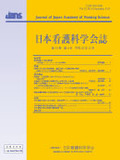Japanese
English
- 販売していません
- Abstract 文献概要
- 参考文献 Reference
要旨
目的:高齢者のうつ病からの回復について,生活世界との関連の中で明らかにすることである.
方法:うつ病と診断され精神科治療を受けており,寛解または維持期にある65歳以上の高齢者8名を対象に,非構成的面接を行い,Giorgiの科学的現象学的方法で分析した.
結果:高齢者は,うつ病の発症から急性期にかけて心身が【生活世界からの疎外や圧迫】を受けており,生活世界の中で自由に生きることができなくなっていた.そのような疎外や圧迫が強くなることによって,【厭世観による死の衝動からの支配】に至っていた.これらの体験は,治療につながるきっかけとなり,精神科治療を受ける中で【生活世界へ帰還するきっかけを実感】することができていた.生活世界への帰還は,うつ病からの寛解を意味していた.うつ病高齢者にとっての生活世界への帰還のあり方は【なじみの人間関係や日常生活に帰還】し,【死の衝動からの解放と天寿全うへの託し】に至ることであった.
結論:看護師は,高齢者のうつ病からの回復を支援するために,【なじみの人間関係や日常生活への帰還】【死の衝動からの解放と天寿全うへの託し】を重視した環境創りをすることが重要である.
Objective: To explain recovery from depression in the elderly in relation to the life-world.
Method: Unstructured interviews with eight elderly people (>65 years old) were conducted. All had been diagnosed with clinical depression and had been receiving psychiatric treatment. Symptoms were either in remission or in a temporary lull. The interview results were analyzed using Giorgi's phenomenological method.
Results: From the start of depression until the acute stage, the mind and body of the participants were subject to isolation and oppression in the life-world and were unable to live without any inhibition. As such isolation and oppression worsened, they were preoccupied with the impulsive desire for death due to pessimism. These experiences served as the impetus for treatment, and the participants were able to realize the catalyst to bring themselves back to the life-world through the psychiatric treatment. Reintegration into the life-world suggests remission of depression; for the participants, reintegration into the life-world meant return to familiar relationships and daily lives and liberation from the impulsive desire for death and acceptance to live out their natural lives.
Conclusion: Nurses need to provide an environment which emphasizes return to familiar relationships and daily lives and liberation from the impulsive desire for death and acceptance to live out their natural lives to facilitate the recovery of elderly patients from depression.
Copyright © 2014, Japan Academy of Nursing Science. All rights reserved.


